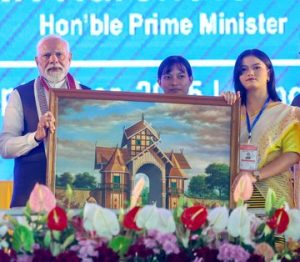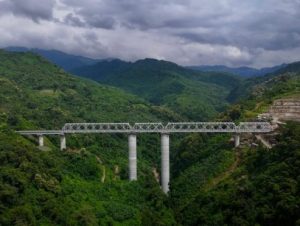Opinion Watch: Ranil Vickremesinghe in Lankan hot seat; Illegal mining cancer; Cure healthcare

Photo credit Twitter Ranil Vickremesinghe & BhajanGlobal
The Raisina Hills makes endeavor to curate contents for thinking minds. The Opinion watch adopts a conversational style to examine editorials carried in The Economic Times (ET), The Indian Express (IE), The Hindu (TH), The Pioneer (TP) and Deccan Herald (DH).
The ‘Aragalaya (the citizens movement)’ felled Sri Lanka’s most powerful President till date Gotabaya Rajapaksa following an uprising which began in the last week of March this year.
Ranil Vickremesinghe has been elected the new President of Sri Lanka by its Parliament.
Most of the newspapers in India have run Edits on the new development in Sri Lanka, while listing out challenges for Vickremesinghe.
IE didn’t miss out to mention the irony that the politician who was rejected by the people in the 2019 elections in Sri Lanka, with his party decimated and he even losing the polls, is now the President of the country.
Indeed, Vickremesinghe, the nominated MP in the Sri Lankan Parliament, was the chosen man of Gotabaya Rajapaksa to become the Prime Minister of the country after the financial collapse. His election to the office of President has also been possible on account of the support of the ruling Sri Lanka Podujana Peramuna (SLPP).
His nearest rival was Dullas Allahapperuma, a dissident from within the ranks of SLPP, and supported by the Opposition Samagi Jana Balawegaya (SJB).
IE, DH, HT, and TH have all commented on Vickremesinghe’s victory, but they have underlined that he has to win the support of the street, while restoring the financial normalcy in Sri Lanka.
Vickremesinghe hasn’t been miser with words ever since he took the office of the Prime Minister. He has been candid, and sometimes even brutal with his descriptions of the financial mess of the country.
IE noted Vickremesinghe’s projections of normalcy taking as much time as the end of 2023, while also mentioning his bid to line up an aid consortium of India, Japan and China, besides hosting an international donor’s conference in Colombo in November.
TH reminds that while India has poured USD 3.8 billion in Sri Lanka to stabilize its economy, China’s contributions has so far been a mere USD 74 million.
Ironically, the dailies have not dug deeper, while restricting their analysis to what happened in Colombo on Wednesday.
There are reports that suggest that Gotabaya Rajapaksa made risky bets with Chinese funds, while there’s massive commentaries on Beijing pushing Colombo in deep debt-trap.
In this backdrop, Vickremesinghe’s bid to hope from China is only foolhardy.
Illegal mining is a menace, which is deeply-entrenched in most of the states in India, and those who dare to challenge the might of their akas have paid with their lives.
TP in its Edit ‘Cancer of illegal mining’ has come down heavily over the incident in which a DSP Surender Singh at Taru in Harayana’s Nuh was crushed to death by a dumper.
The daily quoted former Haryana Chief Minister Bhupinder Singh Hooda saying that the mining mafia is going out of hand.
TP reminded that a young IPS officer Narendra Kumar Singh in March 2012 was mowed down in a similar fashion in Morena district in Madhya Pradesh. +
In 2013, Durga Shakti Nagpal, another young IAS officer, had launched a crackdown against the illegal sand mafia, lodging 66 cases against the culprits. But she too faced the consequences, and has since been shunted out to the national capital to work in the ministries, deprived from the field postings, as is the case with the young officers. TP asks a pointed question if the political bosses in the states are indeed serious about tackling the menace of illegal sand mafia.
TH has taken a grim view of a recent study published in the peer-reviewed journal, PLOS Global Public Health, on estimates of maternal mortality ratio (MMR), which accounts for number of mothers who die from complications in pregnancy for every one lakh live births.
The daily quoted the study to state that 70 percent of districts (448 out of 640 districts) in India have reported MMR above 70 deaths.
Only 12 and six districts in the north-eastern and central regions have an MMR less than 70, while there’s clear within-State inequalities, even among performers such as Karnataka, Tamil Nadu, Kerala, Andhra Pradesh, and Telangana.
This is indeed worrisome, while the daily shies away from pinning the blame for such an abysmal MMR record of the country, which may be explained for the lack of Planning Commission like entity for round the year monitoring of the states on the human development indicators.





